Tips for Setting Up a Smart Home System
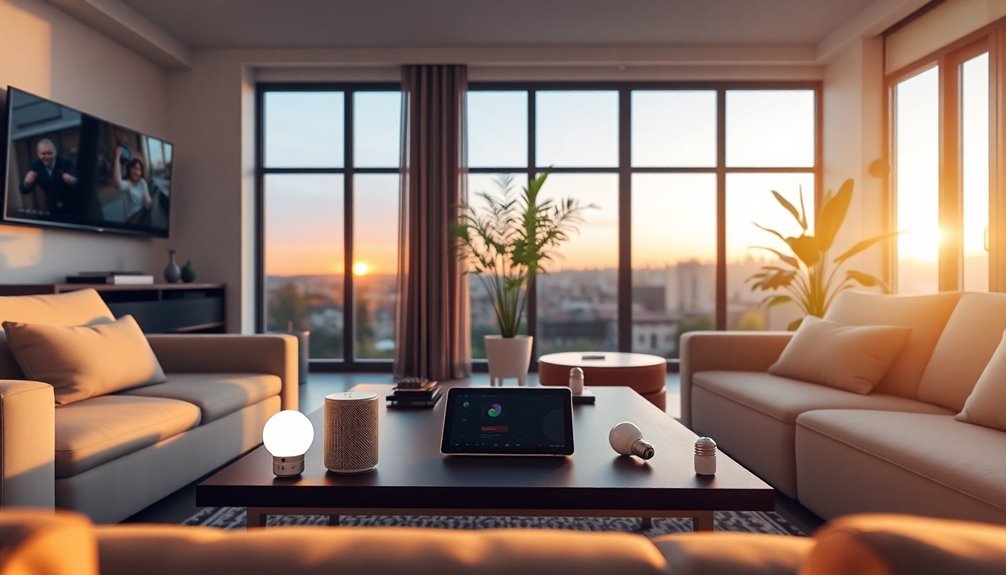
To set up a smart home system, start by evaluating your needs and goals, focusing on security, convenience, and energy efficiency. Choose devices that are compatible within the same ecosystem, like Google Home or Amazon Alexa, and verify their communication protocols. Prioritize security measures, such as smart locks and cameras, to protect your home effectively. Plan your network setup by selecting a reliable router and ensuring strong password protection. Finally, optimize usability with intuitive interfaces and a centralized app for control. Explore these aspects further to make your smart home experience seamless and tailored to your lifestyle.
Key Takeaways
- Assess your needs and goals by prioritizing security, energy efficiency, and convenience within your budget for a smart home system.
- Choose compatible devices from the same ecosystem, ensuring they communicate effectively through common protocols like Zigbee or Wi-Fi.
- Prioritize security measures by installing smart locks and cameras, and regularly update firmware to protect against vulnerabilities.
- Plan your network setup with a reliable dual-band router and consider range extenders for larger homes to ensure optimal connectivity.
- Optimize usability by selecting intuitive interfaces, implementing voice control, and using a centralized app for easy device management.
Assess Your Needs and Goals
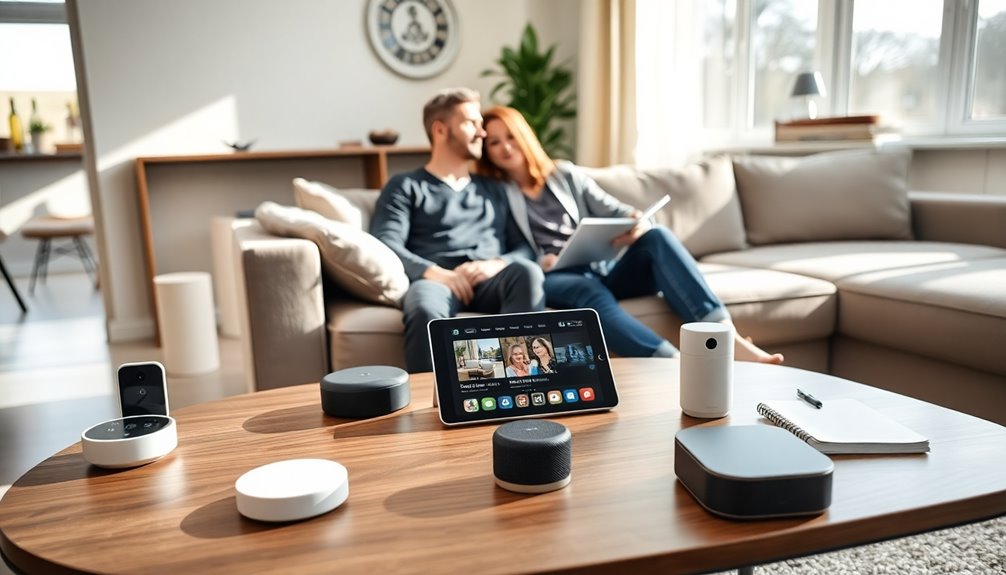
Before diving into the world of smart home systems, it's crucial to evaluate your needs and goals. Start by identifying what you want to achieve with your smart home. Are you looking for enhanced security, energy efficiency, or convenience? Understanding your priorities will guide your decisions and help you reap the smart home benefits that matter most to you.
Next, consider your budget. Smart home systems can range from simple devices like smart bulbs to extensive setups that control everything in your home. Determine how much you're willing to invest, keeping in mind that while some devices may seem costly upfront, they can lead to long-term savings on energy bills and increased home value. Evaluating your budget will help you make informed choices and avoid overspending.
Think about the specific areas of your home you want to automate. Do you want to control lighting, heating, or security? Each area has unique solutions that can enhance your lifestyle. By pinpointing your focus, you can streamline your purchases and avoid the common pitfall of buying incompatible devices.
Lastly, remember that smart home systems should enhance your daily life. Whether you're a tech enthusiast or just starting, aim for a setup that makes you feel more connected and secure in your environment. By evaluating your needs and goals, you're laying the groundwork for a smart home that truly fits your lifestyle and budget.
Choose Compatible Devices
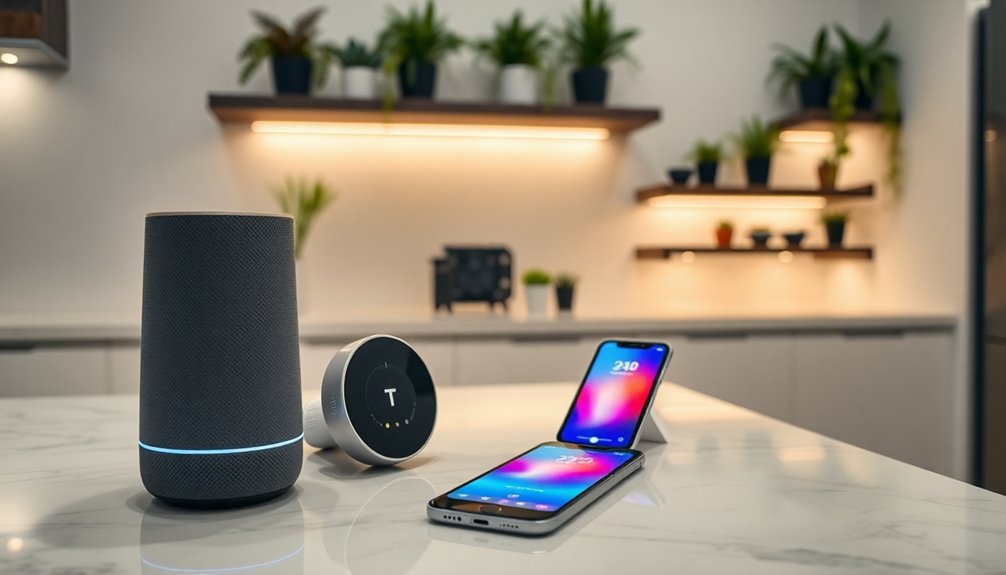
Selecting compatible devices is essential for creating a cohesive smart home ecosystem. When you're building your smart home, you want devices that work seamlessly together. This means choosing products from the same device ecosystems or those that openly support interoperability.
Before making a purchase, conduct a compatibility check to verify the devices can communicate effectively with your existing systems.
Start by evaluating the ecosystems you're considering. Popular ones include Google Home, Amazon Alexa, and Apple HomeKit. Each has its unique features and compatible devices. For instance, if you already have an Amazon Echo, you'll want to prioritize devices that are certified to work with Alexa. This will enhance your user experience and reduce the hassle of managing multiple apps or hubs.
Next, look for devices that support common communication protocols like Zigbee, Z-Wave, or Wi-Fi. These protocols facilitate communication between your devices, verifying they can work together without glitches.
Always check the manufacturer's specifications and user reviews to confirm compatibility.
Prioritize Security Measures
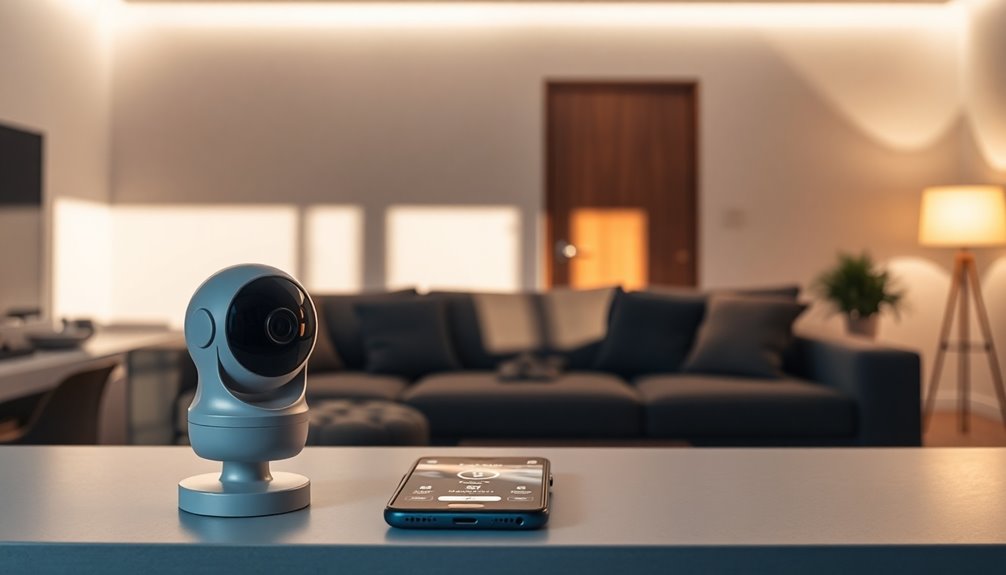
Once you've set up your compatible devices, it's time to focus on security measures to protect your smart home. Prioritizing security is essential not just for your peace of mind, but also to safeguard your family and belongings. Start with smart locks to enhance entry point security. These locks provide keyless entry, and you can monitor who enters and exits your home.
Next, consider installing security cameras around your property. They act as a deterrent against potential intruders and allow you to keep an eye on your home remotely. To help you visualize your security plan, here's a simple table outlining these measures:
| Security Measure | Benefits |
|---|---|
| Smart Locks | Keyless entry; remote access; alerts |
| Security Cameras | Real-time monitoring; motion detection; recording |
Plan Your Network Setup
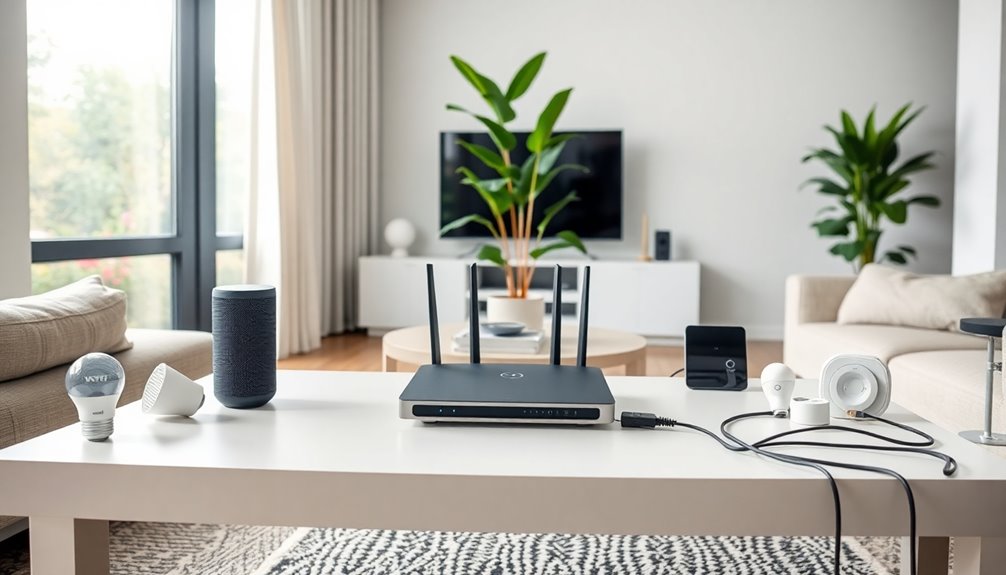
A solid network setup is vital for guaranteeing that your smart home devices communicate effectively and securely. To achieve this, you'll need to focus on your network hardware and its configuration.
Start by selecting a reliable router that can handle multiple devices. Look for one with dual-band capabilities, as this allows devices to connect on different frequencies, helping to reduce congestion.
Next, consider the signal range of your router. If your home is large or has multiple floors, you might need to invest in range extenders or mesh Wi-Fi systems. These solutions can help eliminate dead zones and guarantee a strong, consistent connection throughout your home.
Remember, a stable connection is essential for devices like smart speakers, cameras, and thermostats to operate seamlessly.
When setting up your network, create a dedicated SSID for your smart home devices. This not only enhances security but also makes it easier to manage your devices separately from your personal devices.
Implementing strong password protection and enabling WPA3 encryption can further safeguard your network.
Finally, regularly check for firmware updates for your network hardware. Keeping your router up-to-date helps protect against vulnerabilities and guarantees peak performance.
Investing time in planning your network setup will pay off, allowing your smart home to function smoothly and securely, giving you the peace of mind you deserve as you enjoy the benefits of a connected lifestyle.
Optimize for Usability and Control
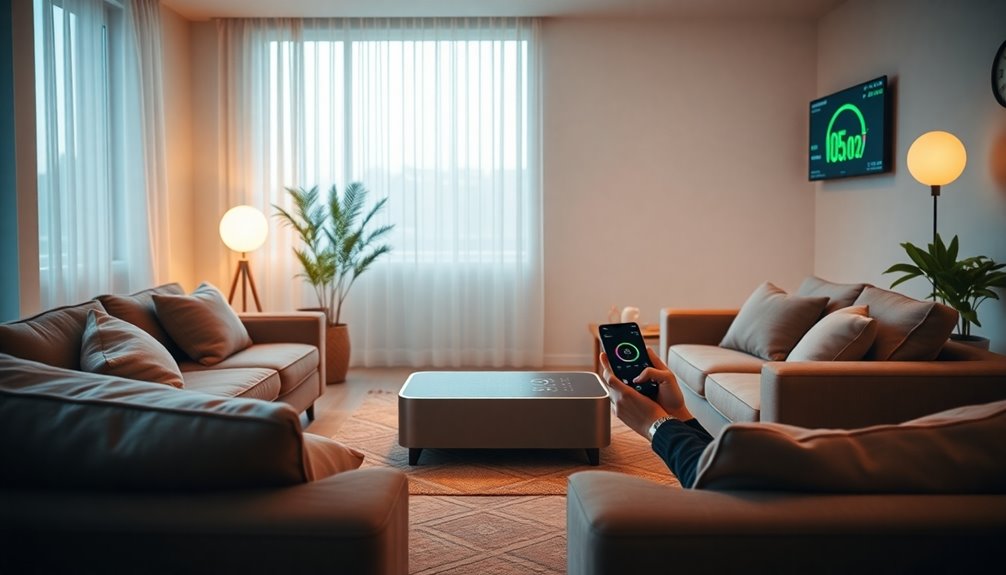
To make the most of your smart home system, it's essential to focus on usability and control. A streamlined user experience can greatly enhance how you interact with your devices. Here are four key aspects to keep in mind:
- User Interface Design: Choose devices with intuitive interfaces. A clear layout helps you navigate settings and controls effortlessly.
- Voice Control: Implement voice-activated assistants. They allow hands-free control, making it simple to operate multiple devices at once.
- Centralized App: Use a single app to manage all your smart devices. This eliminates the need to juggle multiple applications, enhancing your user experience.
- Customization Options: Select devices that let you personalize settings. By tailoring your system to fit your lifestyle, you create a more engaging environment.
By focusing on these elements, you'll optimize usability and control within your smart home. A well-designed user interface can make all the difference, ensuring you're not overwhelmed by technology. Instead, you'll feel empowered, seamlessly integrating smart solutions into your daily routine.
Additionally, reflect on how your smart home communicates with you. Notifications for system updates, alerts for unusual activity, or reminders for scheduled tasks should be clear and actionable.
Enhance your experience by creating routines that fit your lifestyle, like automated lighting for movie nights or temperature adjustments for bedtime.
Ultimately, a thoughtfully optimized smart home system fosters a sense of belonging, making your space more comfortable, efficient, and enjoyable.
Frequently Asked Questions
How Much Does a Smart Home System Typically Cost?
Smart home pricing varies widely, so it's important to take into account your budget.
Basic systems can start around $200, while more advanced setups with multiple devices might run into thousands.
Think about what features you need—security, lighting, or climate control—since these will impact costs.
Factor in installation fees and potential subscriptions for smart services.
Can I Integrate Older Devices Into My Smart Home System?
Yes, you can integrate older devices into your smart home system.
Start by checking for legacy device integration options. Many smart hubs offer compatibility with various older devices through adapters or bridging solutions.
This means you can connect non-smart appliances to your hub, allowing you to control them alongside your newer devices.
What Are the Best Voice Assistants for Smart Homes?
Did you know that over 60% of smart home users prefer voice assistants for controlling their devices?
In a voice assistant comparison, Amazon Alexa, Google Assistant, and Apple Siri stand out due to their advanced voice command capabilities.
Alexa excels in smart home integration, while Google Assistant offers superior search functionality.
Siri integrates seamlessly with Apple products.
Ultimately, your choice depends on your existing devices and personal preferences, ensuring you feel at home with your tech.
How Do I Troubleshoot Common Smart Home Device Issues?
When you're troubleshooting common smart home device issues, start by checking device connectivity.
Verify your devices are connected to the same Wi-Fi network and that your router is functioning properly.
If that doesn't resolve the issue, try power cycling the device—turn it off, wait a few seconds, and turn it back on.
You can also consult the manufacturer's troubleshooting tips for specific solutions tailored to your device.
Are There Any Privacy Concerns With Smart Home Devices?
Yes, there are privacy concerns with smart home devices.
You should always consider data security, as these devices collect personal information that can be vulnerable to breaches.
It's vital to review privacy policies and guarantee you've given user consent for data collection.
Regularly updating your devices and using strong passwords can enhance your security.
Being proactive helps you enjoy the convenience of smart technology while protecting your personal information.
Conclusion
As you commence your smart home journey, remember that each decision shapes your experience. Imagine the convenience of a seamlessly connected home, but also consider the lurking vulnerabilities. Will your devices work together flawlessly, or will compatibility issues arise? By prioritizing security and usability, you're not just setting up a system; you're crafting a lifestyle. Stay tuned for the next step in your smart home adventure—what surprises and innovations await just around the corner?







